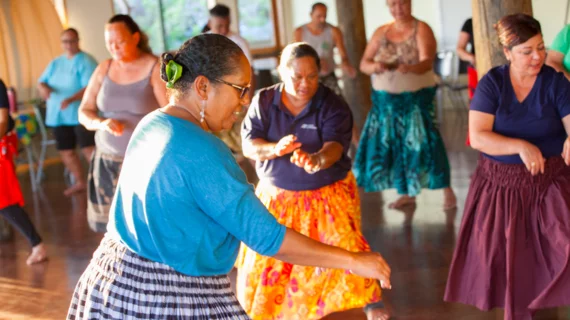Native Hawaiians successfully lower BP with hula program
Native Hawaiians who struggled to control their high blood pressure and type 2 diabetes benefited greatly from a six-month hula dancing program, researchers reported at the American Heart Association’s Hypertension 2019 Scientific Sessions, suggesting culturally tailored interventions might be the key to successful risk factor control in some groups.
According to the data presented in New Orleans Sept. 7, many Native Hawaiians have difficulty controlling their blood pressure, finding typical hypertension control programs to be boring, expensive or demanding. But there remains a need for better BP control in the population, who see four times the risk of heart disease and stroke compared to non-Hispanic whites and present with heart disease 10 years earlier than whites and Asians in Hawaii.
“We found that Native Hawaiins want group-based and culturally relevant lifestyle interventions that resonate with their cultural values and perspectives,” lead author Keawe’aimoku Kaholokula, PhD, of the University of Hawaii at Manoa in Honolulu, said in a release from the AHA. “We created an intervention based on hula, the traditional dance of Native Hawaiians, which can be performed at different levels of intensity by men and women of all ages and is practiced as a form of cultural and creative expression.”
Kaholokula et al. enrolled more than 250 Native Hawaiians for their study, all of whom had a systolic BP of 140 mmHg or higher despite being under treatment for hypertension. All participants also had concomitant type 2 diabetes and continued their usual medical treatment throughout the course of the study.
The entire study group attended three, one-hour informational sessions dedicated to educating them about hypertension, diet, exercise and medication before being randomly assigned to either no further intervention or six weeks of hula. The hula group attended one-hour group hula classes twice a week for three months, then attended one class per month for the next three months.
After adjusting for weight and blood pressure at baseline, Kaholokula and his team reported that compared to people in the control group, those who committed to hula were more likely to have reduced their blood pressure to under 130/80 mmHg, lowered their systolic BP by more than 10 mmHg and were able to sustain their BP improvements at one-year follow-up.
Kaholokula said more than 80% of participants adhered to the hula program for six months and 77% were still practicing at one year, reflecting “high interest in a culturally grounded program.” He said patients described the hula as fun and something that helped them meet both their cultural and spiritual needs.
“While the physical benefits of dancing hula are clear, other positive impacts include creating family-like social support and increasing self-confidence and acceptance of others,” Mapuana de Silva, a cultural expert on hula and consultant for the study, said in the release. “This all comes from the essential cultural value of aloha which is fundamental to hula.”
Kaholokula said his team’s intervention was tailored to Native Hawaiians, but that doesn’t mean a similar approach wouldn’t work in other cultural groups.
“Other similar cultural activities, especially those that include physical activity that meets national guidelines, and social and cultural activities that engage and empower people to make behavioral changes, could be used in a similar fashion in other indigenous groups such as American Indians, Alaska Natives, First Nation People in Canada, Maori in New Zealand, Aboriginals of Australia and many others,” he said.

